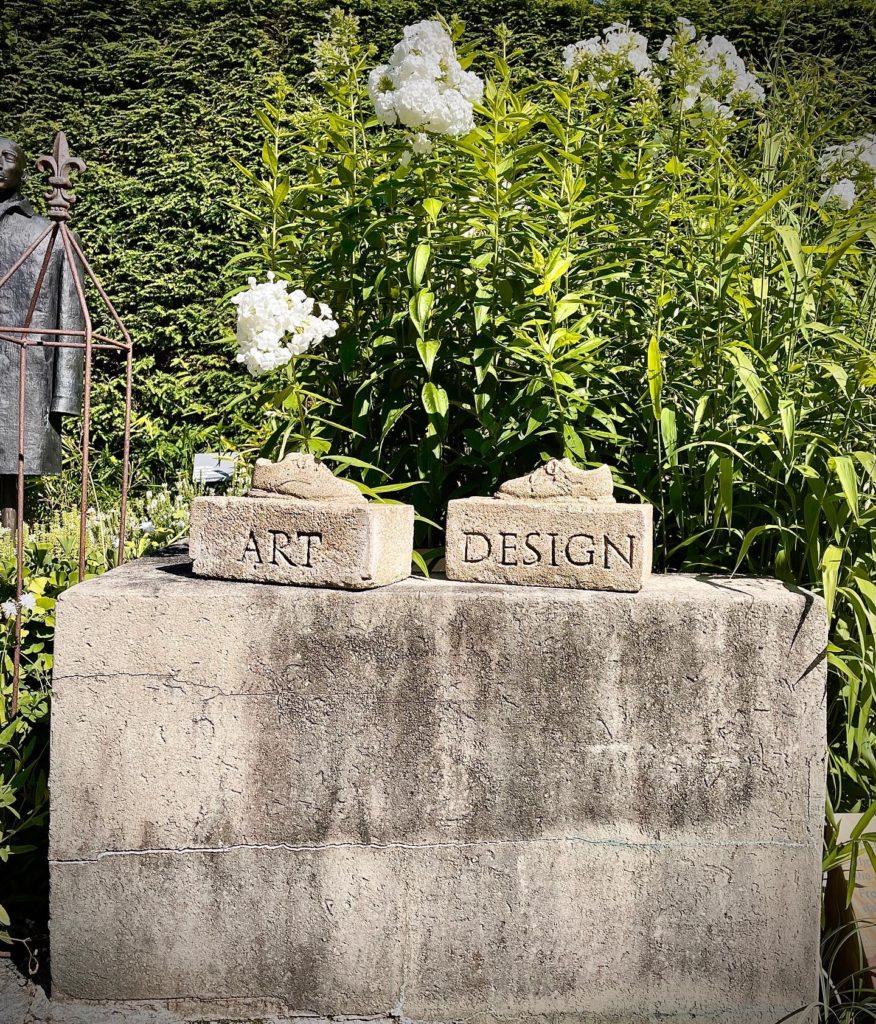
There is no question that humans like labels – Balmain, Etro, and Prada fall in one category, Democrat and Republican fall into another; and then there’s Millennial, Gen X, and the dreaded Boomer. (Yes, these are mostly American ones, but the rest of the world has their own flavors . . .) We are happiest when we have a clear sense of who we are dealing with.
When it comes to Art and Design, however, it’s not the “who” that’s important – it’s the “what” and the “why” that matter.
I’ve gone into the discussion of these two before, and am reinvigorating the topic again after listening to a conversation between Glenn Adamson and Carrie Rebora Barratt on a different topic, Craft. Different, but no less integral.
Glenn was speaking about his book Craft: An American History with Carrie at Longhouse, where she has recently been installed as Director. Longhouse being the home and “grounds” (if the space surrounding one’s home contains world-class sculpture, plantings, and landscaping, they get to be called “grounds”) of the . . . maker. . . Jack Lenor Larsen.
The very lively conversation covered lots of (ahem) ground – but the thing that struck me most was the amount of time dedicated to this obsession with the titling of what is, effectively, “talent”. There were “artist versus designer” elements, “craftperson versus artist”, “maker against all of the above”, and a couple others. In my opinion, these are unhelpful monikers, and they distract from the work that those who bear them produce.
It was brought up by a member of the audience that Larsen referred to himself as a “maker”, though the topic was broached more from the marketing angle of Making (as in Maker Faires, MakerBots, and the overall Maker Movement). This fits with Larsen’s place in the whole generational title obsession: Textile Designer would have been his generation’s name for it, but that is far too limiting. His very forward-thinking (at the time) use of the broader term of “maker” fits his overall persona.
Today we – and I feel a very active part of this royal “we”, though it is not “my” generation that is necessarily practicing it – would probably put Larsen in with the Material Designers: people who are designing the building blocks for other Makers/Artists/Designers. Larsen’s work appeared in architecture, transportation, fashion and numerous other applications, so to speak of him as simply a textile designer seems almost insulting. Larsen put his understanding of textiles and their manufacture to use in elevating them within the larger world of the Built Environment.
Were they “Art”? Were they “Design”? Were they “Craft”?
Yes – absolutely.
The title isn’t important: what IS important is that Larsen used his knowledge and skills to improve the state of everything from fiber selection and usage to building performance to – of course – the aesthetics of the environments he dealt with.
Current Material Designers are keenly focused on environmental concerns, but are also addressing other performance characteristics, whether through the incorporation of technology, increased durability, or colorfastness. These attributes will then be spread far and wide into all aspects of . . . Art, Design, and Craft.
However one wants to use those terms.
